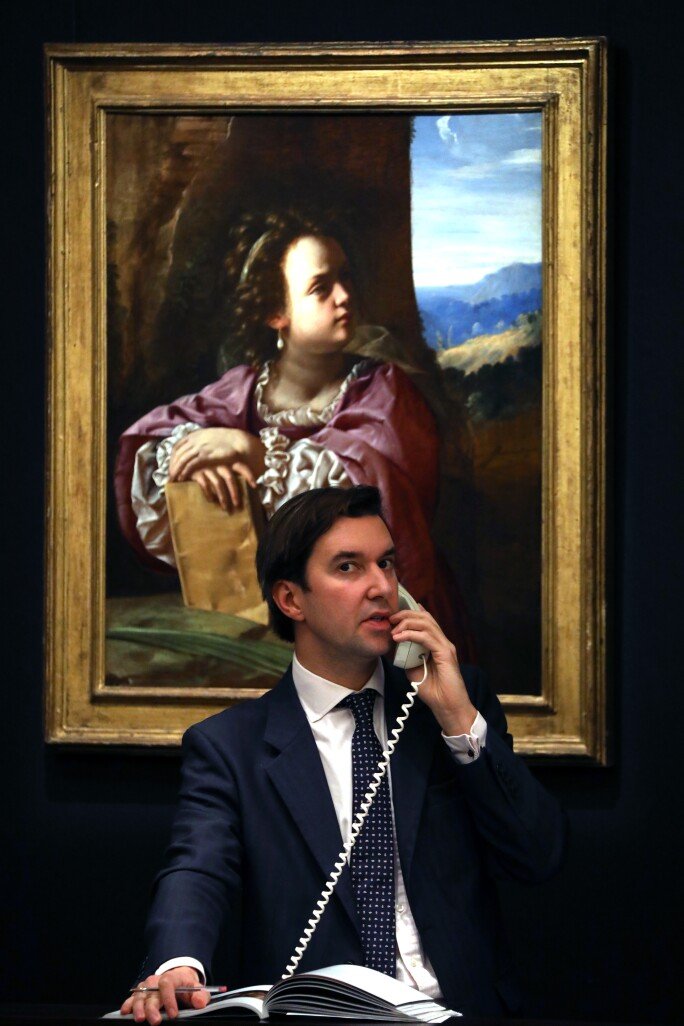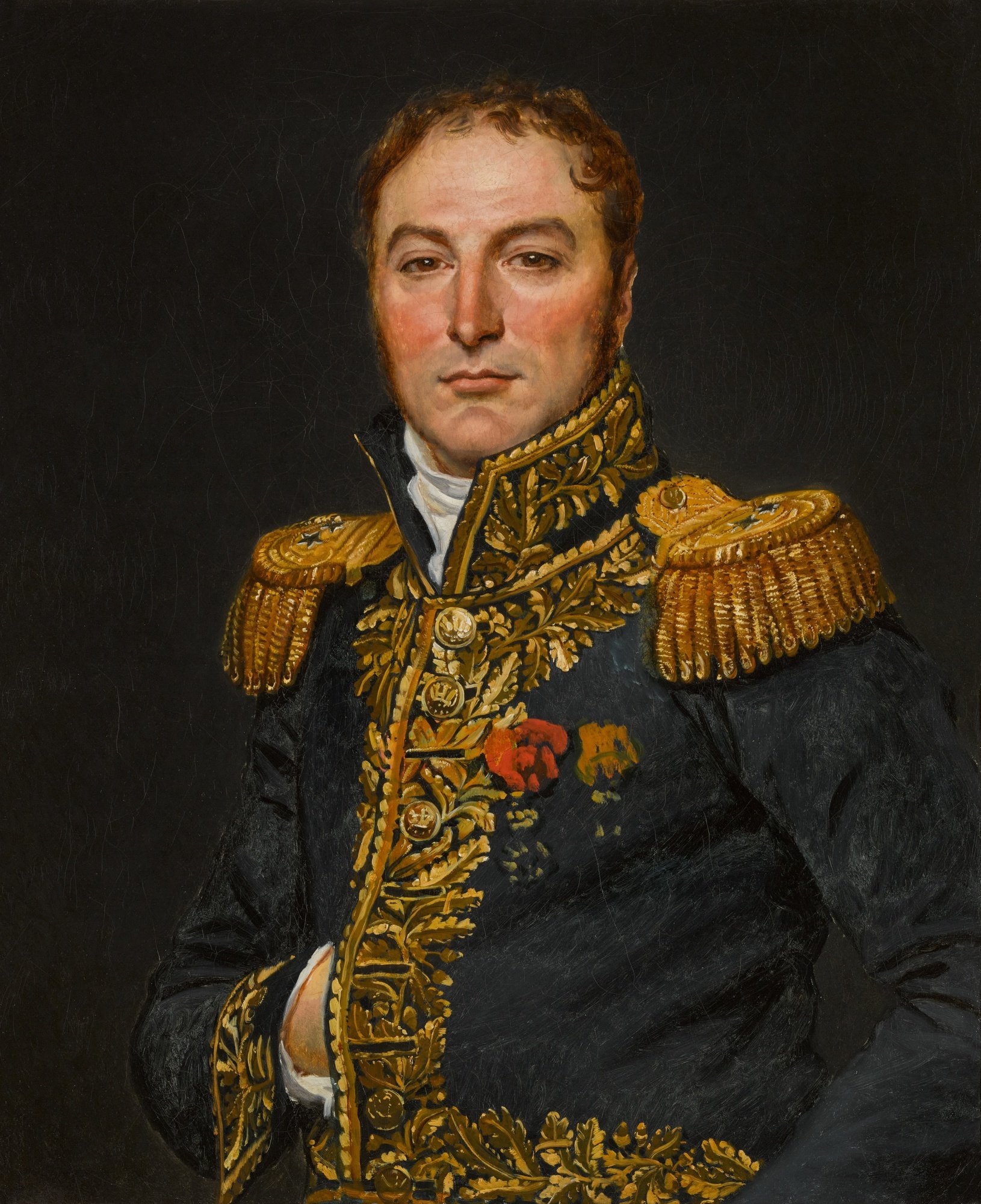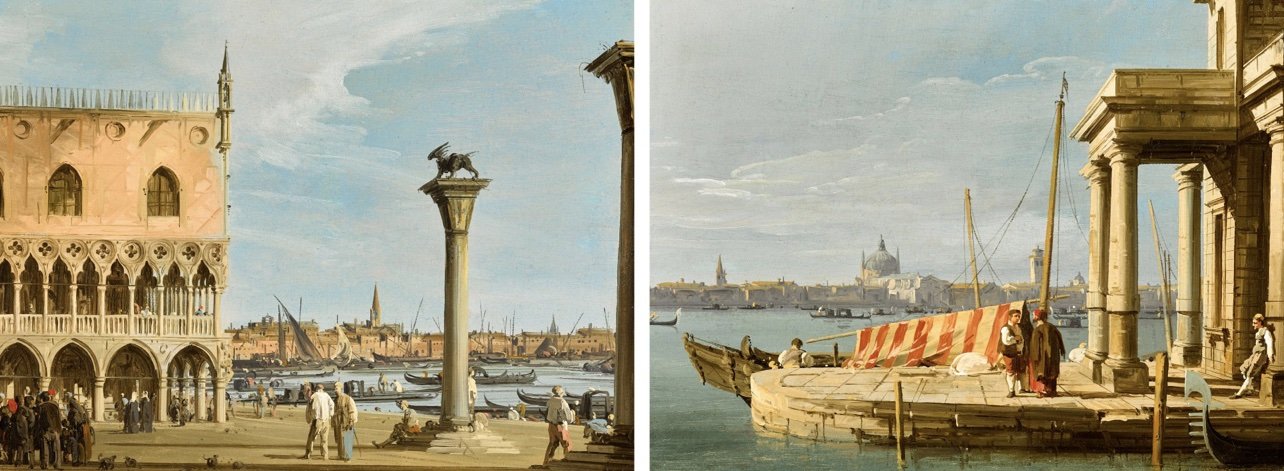Noémie Ngako in Conversation with Edoardo Roberti, Head of Department at Sotheby's
Ahead of the forthcoming July Sales at Sotheby's London headquarters on New Bond Street, Edoardo Roberti, Head of the Department for Old Master Paintings, shares his journey into the art world, the department's work and the market for Old Masters in this exclusive with MADE IN BED.
In this conversation, Edoardo shares his personal highlights from the Old Master & 19th Century Paintings Auctions (5-7 July 2023) taking place during this busy yet thrilling season, the diversification of the market and how this one-of-a-kind market sector continues to grow through its self-sufficient reinvention.
Edoardo Roberti.
Noémie Ngako: Thank you for finding the time to share your story and give us some insights into the Art Market for Old Masters. Can you tell us what your journey into the art world has been like or how it started?
Edoardo Roberti: I studied Modern Languages at University. After I finished my Bachelor of Arts, I thought I'd have a year away from university before I went on to do some graduate studies, and in that period, I started at Sotheby's as an intern. I then became a junior cataloguer for the Old Master department in February 2007 and have been there ever since, whilst I also spent two years working in the New York offices.
NN: Have you always been interested in Old Masters artworks?
ER: Yes. Looking back, Oxford's Modern Languages department was in the same building as the Ashmolean Museum. So quite often, when I wanted to do something other than reading French literature, I went to look at the Old Masters and sculptures in the museum. I was drawn to that particular world of paintings.
Giovanni Battista Pittoni, The Nativity, circa 1720, oil on canvas, 54 × 69.1 cm. Old Master & 19th Century Paintings Day Auction, Part I, 6 July 2023, Lot 168, Estimate £70,000 - 90,000.
NN: Can you explain how the Old Master Paintings department works at Sotheby's and why teamwork is important?
ER: Several experienced senior specialists have built contacts around Europe and the UK over the years and keep on doing so. They constantly engage with their contacts in order to keep up relationships by completing valuations, or discussing estate planning, amongst other things. There is also a younger group of specialists who are - what you might call the engine running - because they complete the cataloguing and the research within the department.
Together the specialists find paintings for sale from consigners, and they build the sale to make it as attractive, well-priced and coherent as possible. Then comes the creation of the auction, which is essentially the marketplace from which buyers come.
Alongside the specialists are the equally important group of administrators and personal assistants who run the department's daily operations.
Therefore, for the efficient functioning of the department, it is essential to find a very careful and successful working balance between those two different aspects and types of jobs [the specialist and administration teams]. In the London office team, there is a very good balance with a blend of long-standing and new staff members, characterised by a lovely harmony between them and how they fit into their different roles.
Sir Thomas Lawrence, P.R.A., Portrait of Lady Catherine Bateson (1787-1873), 1811-1812, oil on canvas, 91.5 x 71.7 cm. Old Master & 19th Century Paintings Evening Auction, 5 July 2023, Lot 36, Estimate £200,000 - 300,000.
NN : Could you talk us through the upcoming sales and what the art market for Old Masters is looking like currently?
ER: The forthcoming sales are extremely strong regarding the variety of paintings offered. It is an interesting blend, fresh to the market, and has significant growth regarding its historical importance and commercial weight and impact.
Last December, for example, we had a very interesting sale. We had a magnificent painting by Titian [Venus and Adonis], but the sale was not particularly balanced because there were seventeen Dutch and Flemish still lifes included. So while the market responded favourably to such a great group of pictures, it would be difficult to say that this was a well-balanced sale.
Although a well-balanced sale is not necessarily needed, especially if it is well-priced and people like it, there is something so satisfying about seeing all the major schools so well represented, which allows us to engage with all different types of clients. Indeed, certain clients are particularly interested in schools that weren’t represented in our last December sale. I would say that this is nice to have something for everyone.
Jacques-Louis David, Portrait of General Baron Claude-Marie Meunier (1770–1846), circa 1812, oil on canvas, 73 x 60.1 cm. Old Master & 19th Century Paintings Evening Auction, 5 July 2023, Lot 37, Estimate £2,500,000 - 3,500,000.
François Boucher, A capriccio view of a mill and a dovecote, with a washerwoman and a girl holding a basket, 1743-1750, oil on canvas, 59.9 x 49 cm. Old Master & 19th Century Paintings Evening Auction, 5 July 2023, Lot 32, Estimate £150,000 - 200,000.
NN: Speaking of the forthcoming sales, what are your personal highlights?
ER: There are many highlights because we have a wide range of high-quality paintings in all sales.
I have particularly enjoyed working on Pentecost by the Master of the Baroncelli Portraits. It's a painting of extraordinarily good condition, painted in Bruges, modern-day Belgium, at the end of the fifteenth century, whose earliest provenance is from the sixteenth century. The artwork is interesting for its price, quality, condition, size and significance. Indeed, this is an exceptional and exciting picture, with an estimated price of seven to ten million pounds, that can rarely be on the market.
A third party has already come forward to provide a guarantee on this work, and it is useful to be able to present a painting to market to a price range that is not necessarily based on our own estimation but actually already comes with a price that an outside person has established.
The Master of the Baroncelli Portraits, Pentecost, circa 1490, oil on panel, 106 × 122 cm. Old Master & 19th Century Paintings Evening Auction, 5 July 2023, Lot 7, Estimate £7,000,000 - 10,000,000.
There's also an unusually beautiful pair of works by Canaletto. He's an artist I always loved and admired. These paintings are small but very sweet and in lovely state. They are of exceptional quality and artistic freedom, something that Canaletto doesn't always do as he can be careful and a little precise. In this pair, however, he's loose and free, and it does have the feel, although he painted them circa 1730, of something more personal and not something he was necessarily painting for someone. This lovely pair explores the light, movement and action in Venice on a sunny day.
Giovanni Antonio Canal, called Canaletto, Venice, a view of the Piazzetta with the southwest corner of the Doge's Palace; Venice, a view of the quay of the Dogana, circa 1720s, a pair, both oil on canvas, laid on panel (probably pine), each: 28 × 37.5 cm. Old Master & 19th Century Paintings Evening Auction, 5 July 2023, Lot 29, Estimate £3,000,000 - 4,000,000.
NN: What is interesting, and represented both in these sales and in the department, is the broad area of specialisms, including recent developments of what was considered, not so long ago, as overlooked categories. I'm thinking, for instance, of British art or Orientalist paintings, but also female artists (works by Vicomtesse Iphigénie Decaux and Maria Spilsbury are included in the July Auction Sales). What do you think about the long-term positioning of these newly highlighted market sectors? Will they continue to grow and become more established in the coming years?
ER: Well, if we focus on female artists, the predominance grounds of history in society and, as expressed in music, the history of art and many different fields, have seen the dominance of male artists, figures or characters.
This recent interest in female artists is a much-needed and significant sociological phenomenon, which consists of redressing imbalances from the past. Indeed, for too long, women have not had, and in many cases continue not to have, a correct representation regarding fairness and equality, but also regarding the artistic, philosophical, and psychological input of that half of the world population.
Nonetheless, being interested in this sector of the art market for the sake of it, for speculation, is not a solution either. It should cost a deeper movement to give women their correct and long overdue representation on a much greater stage, creating and establishing the needed visibility that female artists deserve.
It is also exciting to see how prices have already changed due to the impact of this phenomenon, which I don't think - this is my impression, and others may well disagree - is a futile trend in the art world. The visibility and market for female artists will continue to evolve. It should be a standard, and I believe it will be.
Vicomtesse Iphigénie Decaux, née Milet de Mureau, Trompe l'œil still life with a bunch of white and black grapes, 1803, oil on marble, 35 × 31.2 cm. Old Master & 19th Century Paintings Evening Auction, 5 July 2023, Lot 38, Estimate £50,000 - 70,000.
Maria Spilsbury, A Sunday-School, 1803, oil on canvas, 117 × 141.5 cm. Old Master & 19th Century Paintings Day Auction, Part II, Lot 378, Estimate £10,000 - 15,000.
NN: Do you think that the diversification of the market (with phenomenons of lower volume of works for sale, online sales) will have, in the long-term, a positive impact by attracting new collectors, notably younger generations, and making Old Masters more accessible?
ER: Regarding online sales, I think they have been an outstanding and valuable tool for selling paintings below twenty to fifteen thousand pounds.
Indeed, these new types of sales have been great for reaching a new audience. Many of our bidders are entirely comfortable with how these things work, and the average age of bidders and buyers in these sales have significantly decreased from just five to ten years ago. So online sales represent a positive impact in that regard.
However, live auctions are still strong and continue to attract many people. I do not necessarily think that the two occurrences [live and online auctions] are influenced by a generational phenomenon, but probably more based on a sense of occasion sometimes. For instance, with the higher-top-value paintings, live sales will likely remain popular with buyers and sellers. On the other hand, online sales have increased our visibility and reach, drawn in a greater audience, and kept Old Masters relevant by reinventing them, representing them, and repackaging them to a whole new public, which is fantastic.
So yes, online sales have impacted dynamics and the average age of buyers. For example, our sales had intense bidding during the pandemic, although it was hard to keep up with demands and source paintings because of the lockdown. Indeed, there was no shortage of buyers and bidders, and we had some of our most successful sales ever.
French School, A Moroccan sentry in the desert, oil on canvas, circa 1800, 59.2 × 41.4 cm. Old Master & 19th Century Paintings Day Auction, Part II, Lot 339, Estimate £15,000 - 20,000.
Sir Lawrence Alma-Tadema, Past and Present Generations, 1894, oil on panel, 35.9 × 22.5 cm. Old Master & 19th Century Paintings Day Auction, Part I, Lot 151, Estimate £250,000 - 350,000.
NN: As the sector is reaching new audiences, what advice would you give to a student or young professional who would like to specialise and work in the Art Market for Old Master Paintings?
ER: There are two aspects to working in Old Masters. First, it is very important to understand the sector you appreciate and be precise. It is well worth taking the time to go and visit as many exhibitions as possible to discover slowly, observe and learn deeply about the pictures in London's National Gallery, for instance. It does take time, yet it is essential to have a wide and generalist understanding of this enormous field which comprises some seven hundred years of history and all the European schools. So it is an impossible task in many ways, but slowly, you can have a really good feel for all artworks.
Once you have acquired this understanding, constant learning and professionalisation in this field can be considered an apprenticeship. I suggest spending these years cementing an understanding of the paintings and then trying to see as many auctions as possible to see the works offered on the market and how they are priced. It can be helpful because, so often, two things look very similar to an untrained eye, yet they are at different price points. But why might that be? Is it related to a work's condition? Is this painting in good condition but dirty? Or is it clean but in bad condition? These are all very significant aspects of the Old Master World and how to understand its market.
NN: Do you have a final thought you would like to share?
ER: Old Masters is a category like no other because it's a conglomeration of many different schools and periods, all added together.
While specialisation in two, three, or four different schools is possible, based on one’s preferences, the most essential aspect is to engage with the whole and try to acquire the deepest understanding of this tremendous and stimulating sector that is Old Master Painting.
Many thanks to Edoardo Roberti on behalf of MADE IN BED.
All images are courtesy of Sotheby's.
To learn more about the upcoming Old Master & 19th Century Paintings sales at Sotheby's, click for the Evening, Day and Online auctions.
Noémie Ngako
Art Markets Co-Editor, MADE IN BED












